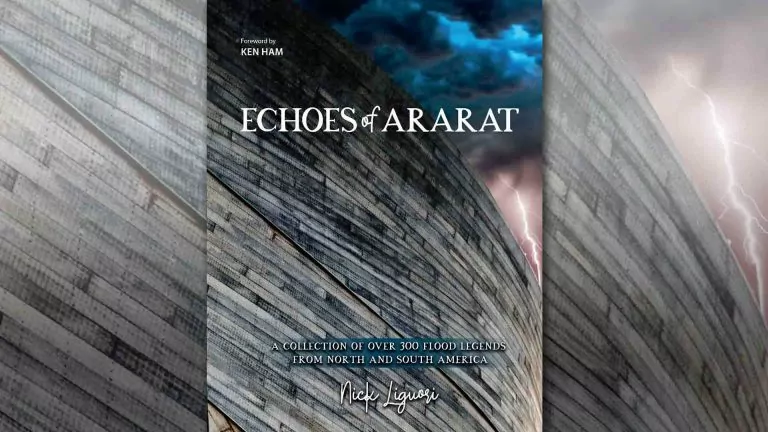by Nick Liguori
2021 / 300 pages
Why are there Flood myths all over the world? Christians can explain it by pointing back to Noah: these myths are so widespread because they find their origin in a real event, common to all mankind – every last tribe and nation can trace their origin back to the small family that lived through this cataclysmic worldwide deluge.
But how can skeptics explain it? If it was just one or two stories, maybe they could attribute it to coincidence. But confronted with these 300-some accounts – and that’s just from North and South America – the case for coincidence just isn’t plausible.
What Nick Liguori has done here is collect the oldest known written accounts of these indigenous tales, dating back a hundred to two hundred years or even more. While they were originally a part of native oral tradition, these accounts were written down after they were told to European explorers, missionaries, and settlers. So, for example, this is from the Caddo tribe, told to a group of explorers who were mapping the Arkansas/Texas Red River in 1806:
They say that long since, a civil war broke out among them, which so displeased Enicco, the Supreme Being, that he caused a great flood, which destroyed all but one family; consisting of four persons, the father, mother, and children. This family was saved by flying to a knoll at the upper end of the prairie, which was the only spot uncovered by the water. In this knoll was a cave where the male and female of all the kinds of animals were preserved. After the flood has continued one moon, they set a bird, called the O-Wah, at liberty, which returned in a short time with a straw. The family then set out on a raft in search of the place from whence this straw was brought, and pursuing a west course for two leagues they came to land.
Some of the elements from the Genesis account include: God is displeased with the world, a great flood, one family saved, a bird sent out and coming back with something, two of each kind of animals saved, and a boat of sorts.
Other stories have only a glimmering of the original remaining. Moravian missionaries arrived on Greenland in 1733 and the following is an account David Cranzz (1723-1777) included in his History of Greenland:
Almost all heathen nations know something of Noah’s Flood, and the first missionaries found also some pretty plain traditions among the Greenlanders; namely that the world once overset, and all mankind, except one, were drowned; but some were turned into fiery spirits. The only man that escaped alive, afterward smote the ground with his stick, and out sprung a woman, and these two re-peopled the world. As a proof that the deluge once overflowed the whole earth, they say that many shells, and relics of fishes have been found far within the land where man could never have lived, yea that bones of whales have been found upon a high mountain.
In story after story, we see echoes, not just of the Flood account, but also of the events of the Tower of Babel. This is a fascinating book!
So, again, how do the skeptics explain it? The best secular explanation is that these myths and legends are of a recent origin, only coming to be after natives first heard the story of the Flood from missionaries spreading the Bible. But that supposes that native oral tradition could change that fast, and that easily. And why would they adapt their traditions to incorporate part of the Bible account while ignoring the rest of it? Doubters will doubt, but they really have to work at it to dismiss all the stories collected here.
While the bulk of the book is stories, one of the appendices contrast and compares these American myths with both the biblical Flood account and the one found in the Epic of Gilgamesh. This epic is probably the second most famous flood account of all, and skeptics will say that the Bible’s version was inspired by it. But as Liguori shows, that idea is preposterous (you can also learn why that’s so here).
If you enjoy Echoes of Ararat, you’ll also appreciate Charles Martin’s Flood Legends: Global Clues of a Common Event which is a much shorter (just 150 pages) overview of Flood legends, this time from around the whole world. Echoes of Ararat is far more weighty, but consequently is a book you’re more likely to just dip into. Meanwhile, Flood Legends is something you’ll read all the way through. Both would be fantastic resources for your church or school libraries, and also good gifts for Christian school history teachers.
And if you want to learn a bit more about Noah’s Ark, and Flood myths, be sure to check out the 10-minute video below.












